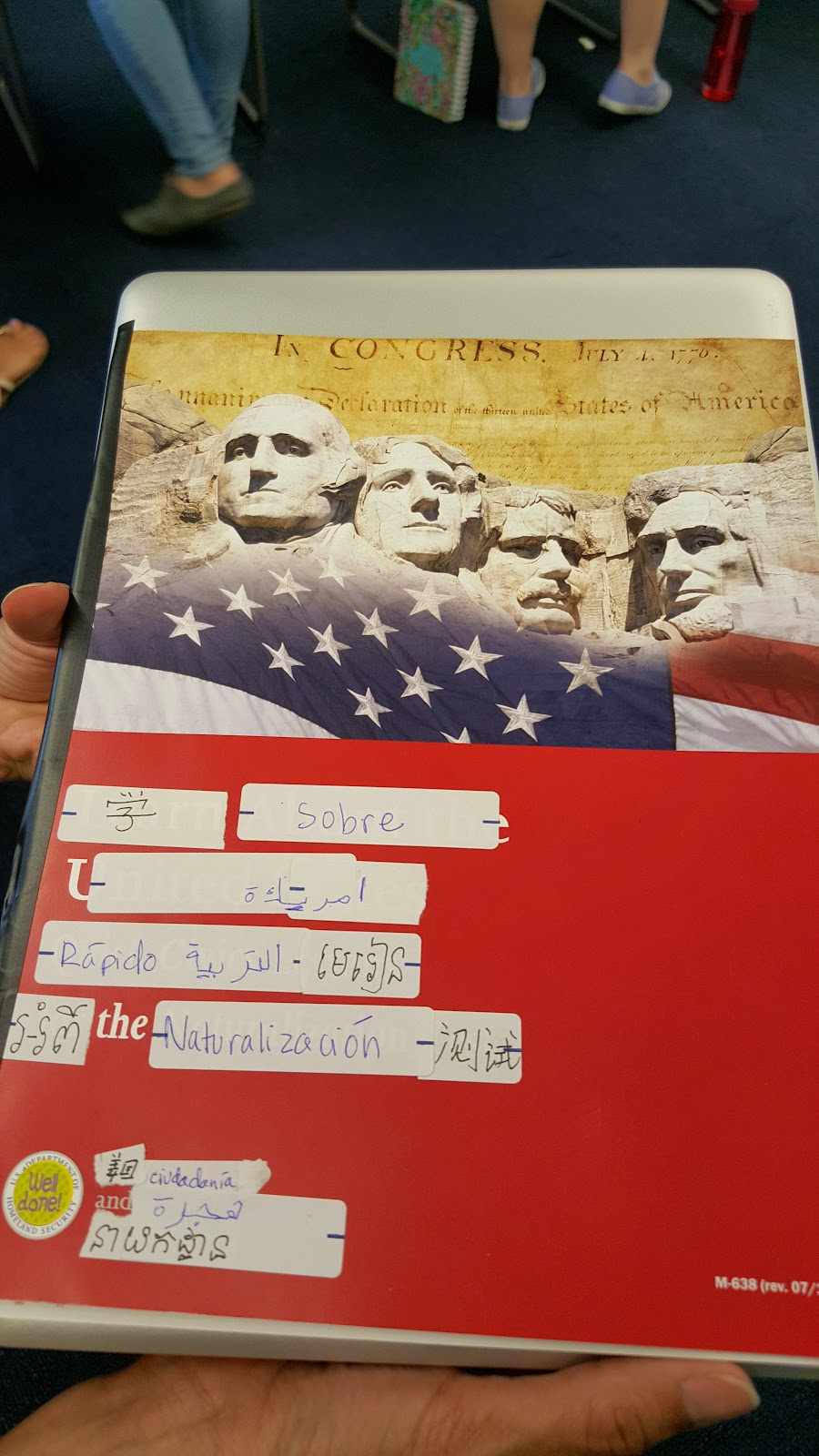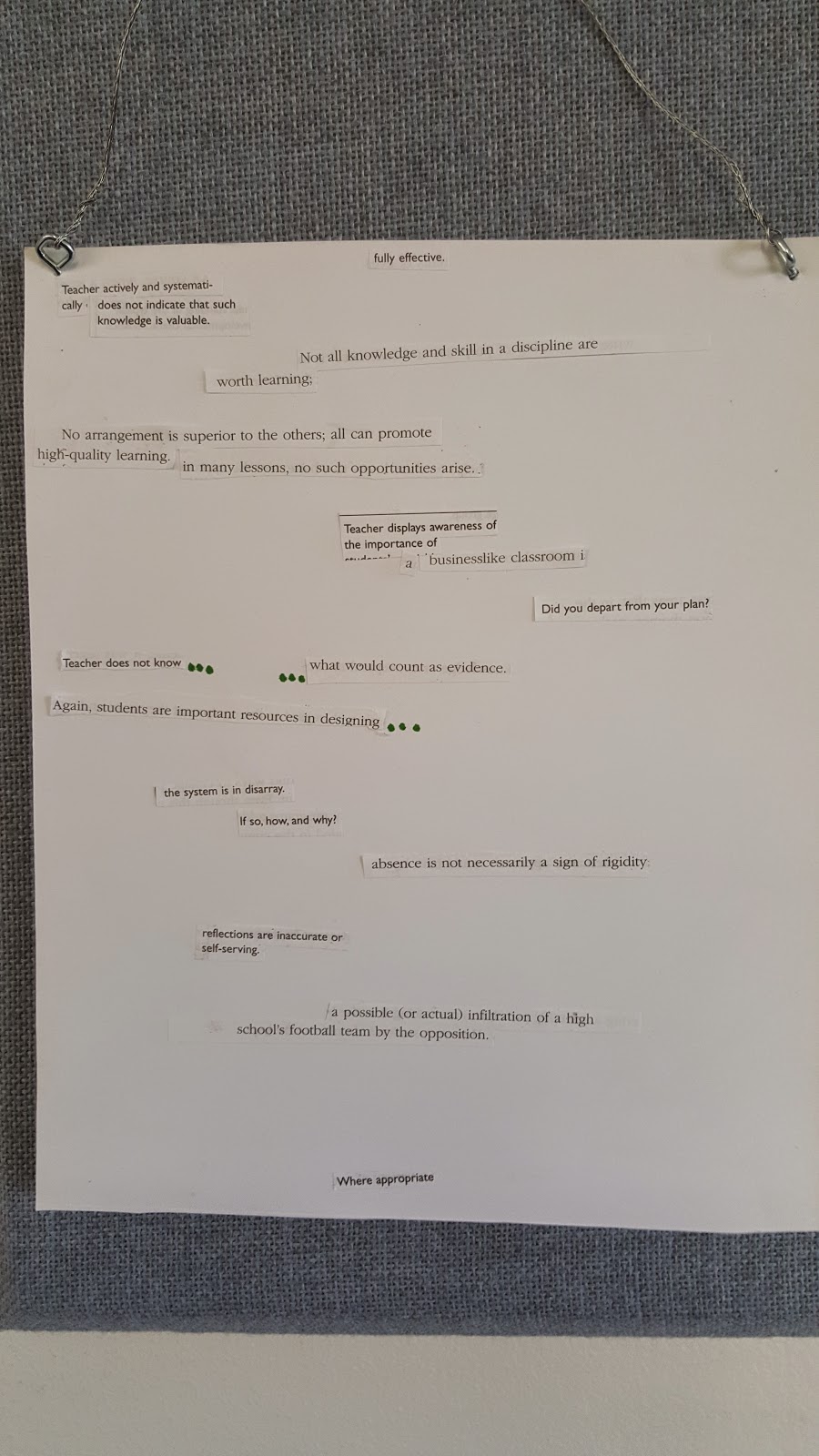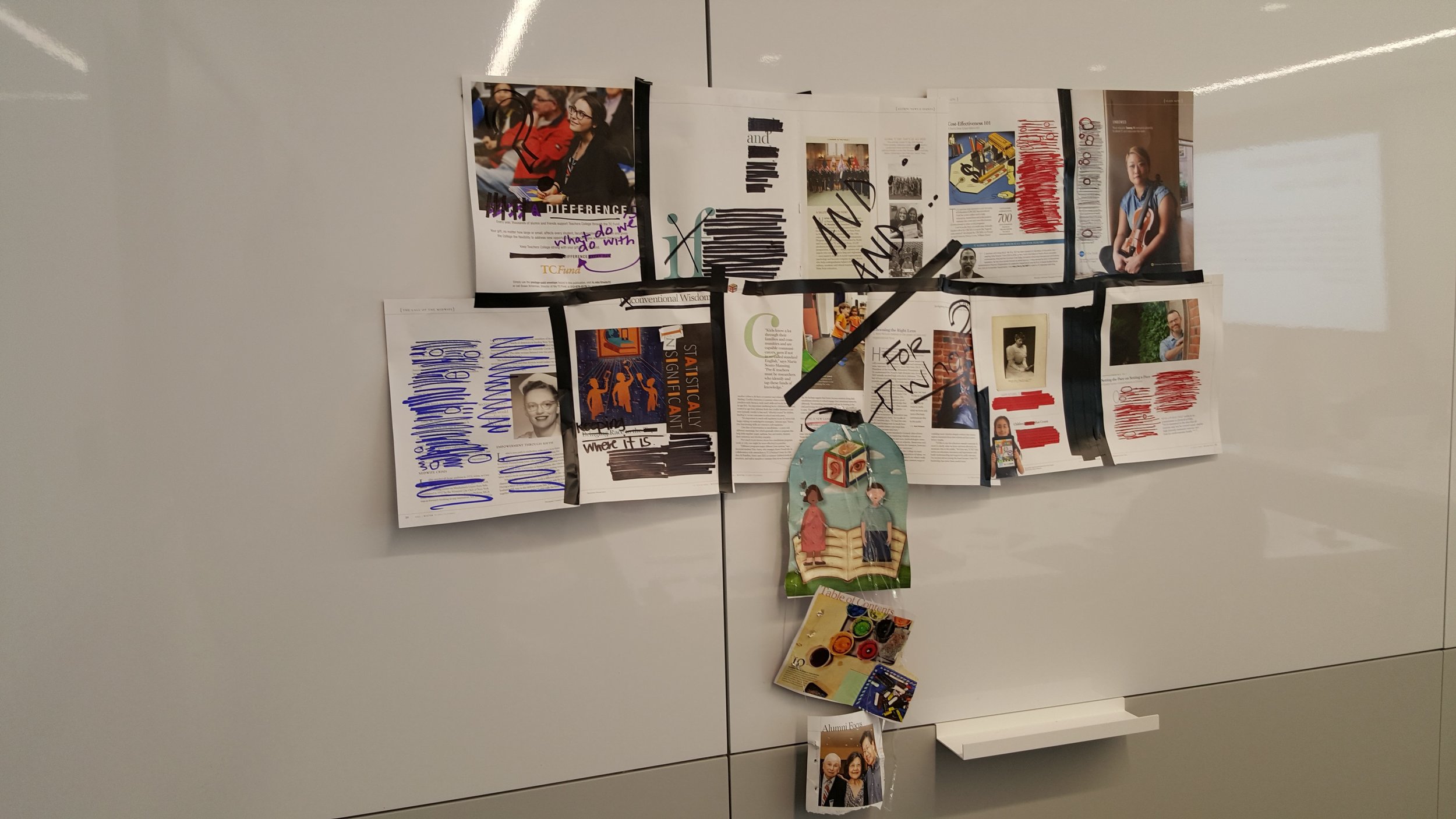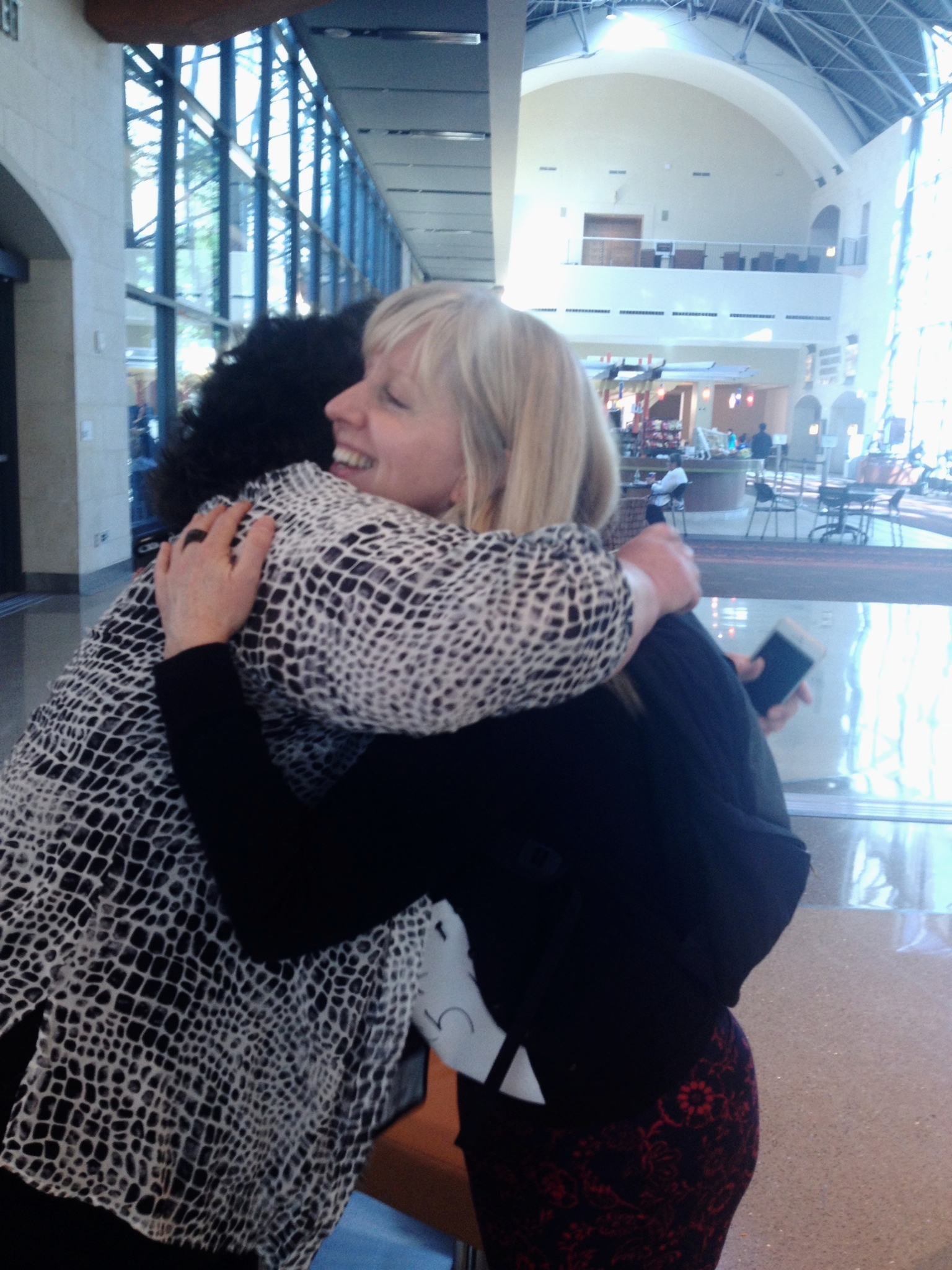The following are projects created through C.A.T.C.H.
Hacking the University:
Below are improvised and spontaneous acts of hacking that have occurred in the halls of Teachers College, Columbia University. As Lewis and Friedrich (2015) explain, hacking is an act that suspends predetermined ends so as to return things, concepts, and gestures back to common use. It separates where things ought to be from how things ought to function. Importantly, hacking does not negate/destroy/critique so much as creatively invent through strategies of displacement, conjunction, and mutation.
Lewis, T., & Friedrich, D. (2015). "Educational States of Suspension," Educational Philosophy and Theory, 48(3), 237-250.




The politics of aesthetics, a podcast
Walter Benjamin, an acclaimed member of the Frankfurt School, was one of the first major theorists of new media, including radio and film. He not only discussed the politically progressive and regressive tendencies of these mass technologies, but he also saw them as educational tools. Indeed, between 1927-1933, Benjamin wrote and performed multiple scripts on Radio Berlin and the Radio Frankfurt Youth Hour. These radio plays contained many of Benjamin's philosophical and political themes in miniature form, distilling complex ideas into educationally appropriate subject matter for his young audience. In particular, the radio broadcasts were ways that Benjamin could help children begin to think about historical change.
The following are two Benjamin-inspired podcasts written and performed for Dr. Tyson Lewis's graduate course titled "The Politics of Aesthetics" (Fall, 2016)
Hacking Into the american educational research association annual meeting
In 2017, C.A.T.C.H. performed a series of hacks on the American Educational Research Association Annual Meeting in San Antonio, TX.
Participants were given the following instructions to design and implement a series of protocols:
it has to be free
it has to be able to be done in under 30 mins.
it has to be recordable in some fashion
it has to make us think and feel differently about the conference and its geographical location by exposing, suspending, and reinventing some private, hidden, or taken for granted facet of the conference’s hidden curriculum
the experiment has to be respectful of other people presenting their work at the conference
PROTOCOL ONE: Will Dance for Findings
At the conference, audience members tend to be expected to follow through a presenter's theoretical framework, methodological description, and data analysis in order to then be rewarded with findings. This protocol aspires to dispense with patience and get straight to the truth by offering a different exchange system:
Think of a few things, actions, behaviors, or emotions that you would be willing to offer in exchange for research findings.
Create a sign expressing your will to exchange.
Go to a public space within the conference venue, place the sign in front of you, and generate as many exchanges as possible.
If possible, record the exchanges.
Results:
Participants exchanged hugs for research findings


PROTOCOL TWO: Divisions and SIGs
As fields become more specialized, participants seek more focused groups to present their work in. Divisions and Special Interest Groups (SIGs) are expressions of those focalized partitions. This experiment seeks to suspend the usefulness assumed in separating researchers by clearly defined interests.
Imagine a SIG that defies the logic of SIG-creation. Give it a name and a short description.
Go to a public space within the conference venue and gather signatures in support of your SIG.
Do not reveal the experimental nature of the activity.
If possible, record and bring back signatures.
Results:
Participants exposed and suspended the human-centric nature of SIG creation by soliciting signatures from plants for a "Vegetal SIG"
A to Z with Dr. David Cole
Dr. David Cole, associate professor at Western Sydney Australia, is interviewed by Dr. Tyson Lewis about cinema, education, and Gilles Deleuze.
TINKERING WITH THE MUSEUM TOUR
The following is an experimental protocol written by Christianna Reyes, an MA student in Museum Studies, in the Art Education Department at UNT.
The Inoperative Museum Tour
For my protocols I am focusing on the museum space, specifically looking at the ways in which tours are facilitated in these spaces. By using Friedrich & Lewis’ (2015) concepts of tinkering and hacking I look at the potential for a tour as not a tour in the museum space. To tinker here means to suspend the function of an action, so for this protocol it means I will be suspending the function of the tour. Similarly, by hacking into the tour means to take this suspended function and give it a new function. By tinkering and hacking into the art museum tour, I will take risks and use teaching practices that I usually wouldn’t, in order to embody and create awkwardness in this space.
So what defines a tour in an art museum and what is its function? I thought about my past experience in museums and came up with my own definition of a tour as: the experiences of moving from artwork to artwork, which includes both seeing and discussing art. Essentially, I am looking at the three fundamental principles of what make up tours: looking, talking, and walking. All three of these principles contribute to the facilitation and completion of a tour, in other words they are what Giorgio Agamben (2000) describe as a telos, or a means to an end. Through one protocol I will suspend these three concepts and render them inoperative. This tour will consist of going to three separate sections of a museum where one of the three principles will be suspended as the tour moves along. By doing so, I show an art museum tour’s im-potentiality, which here means an objects ability to both do and not do something (Agamben, 1999). For this protocol it is the the ability to not be a tour while at the same time almost a tour.
The Protocol:
1. Suspending looking – For the first section of the tour, the group will be led to a room where they will be blindfolded. I will know the space so that I am able to navigate the group and will stop to talk and ask questions just like I would during a traditional tour. I will talk about the art in the space as if they could see, talking about formal qualities as well as information about the artist and art history around it. I will even use gestures such as pointing, knowing the group cannot see them.
2. Suspending talking–Next, the group will then be led to another gallery where we will stop in front of a work of art, giving them initial time to look at the work. I will set up the tour with the statement “Take time to look at the artwork for the next minute” or another simple statement as such in preparation for a discussion. However, instead of starting with a discussion I will say the tour in my head without actually speaking. While doing so I will mimic the gestures I would use during a tour, such as pointing.
3. Suspending walking – For the last part of the tour, I will lead the group to another gallery and have them immediately sit down. I will then start the tour by walking to various pieces around the gallery, speaking to the group, but not allowing them to move. I wonder if by doing this I am also in a way suspending looking and hearing, because as I walk farther away from the group, they may have a harder time seeing the art and hearing my facilitation.
Hacking and Tinkering with Graphic Design
The following protocols were written by Sur Won Cha, an MA student in Art Education at UNT.
Graphic design is a visual representation of communicative information translated into an aesthetically pleasant two-dimensional platform. We encounter myriads of graphic design every day through packaging, labels, signs, posters, advertisements, displays, apps, and websites. The elements that define graphic design include point, line, shape, form, space, color, and texture and it is when each of these functions are placed in a harmonious way that graphic design reaches its telos: visual communication.
Giorgio Agamben, an Italian philosopher, proposes the idea of suspending telos, the means to an end. He suspends this means to an end to discover an area of potentiality, incompleteness, and unrealized possibilities that fall outside of a predefined telos. One of the ways, Agamben describes, to find potentiality is by profaning something. Profaning “by means of an entirely inappropriate use of the sacred: namely play,” (2007, p.75) renders the goal inoperative and therefore turn it into “common use” (2007, p.73). In other words, we take it out of its original intended use and make it into a type of free use; it is as it is but with suspension of the goal.
In the next three protocols of Graphic Design as Not Graphic Design, inspired by Agamben’s idea of profaning things into “common use” (2007, p.73), one can explore and experiment by suspending telos. Branding, typography, and advertisement are different ways graphic design plays a social role. This approach may open up possibilities of graphic design as its design elements would be suspended and question the outcome whether it can be recognized as design. It should be noted that Graphic Design as Not Graphic Design does not simply refer to bad design. Rather it is visual representation of “play” (Agamben, 2007, p.73) by suspending the rules and elements that make up the telos of graphic design. As Agamben said, “play frees and distracts humanity from the sphere of the sacred, without simply abolishing it” (2007, p.76).
Protocol 1: Un-Branding
Every product or service has branding. Successful branding is consistent throughout all represented forms from logo to printed materials. Each branding embodies a unique personality and evokes certain emotions from their targeted audience and therefore motivates people to purchase their product or service. Branding plays an essential role in building a sense of business credibility, corporate culture, and customer relationship. For example, Apple users and buyers are drawn to Apple because of its high-end premium branding of products that portray clean and simple designs with its apple logo. Then what will happen if we adopt Agamen’s idea of suspension and apply it to a successfully branded product or service? Within a single brand, find a cohesive set of three products and un-brand them.
Protocol 2: Playing with Type
Typography serves as another application of graphic design. It refers a set of cohesive letters, in which each alphabet and symbol are created with a particular style throughout. The idea was inspired by the linear structural dimension of finding the neutral point, also referred to as the contact point or the point of in-distinction, of two different things demonstrated by Dr. Lewis (personal communication, September 11, 2017). In this case, one end would represent written language and the other end would represent images. What will happen if the pure functional value of communication of written language (alphabets and type) is in contact with visual abstraction (images and pictures)? Let’s play with typography!
Here is an example of inoperative writing:
Protocol 3: Not-Advertising Ad
Often graphic design is an essential component of marketing because of the visual communicative aspect of graphic design. Advertising is what draws targeted audience to be motivated to get interested and purchase a product or service. Every advertisement we run into through various public media all serve with a purpose to gain attention. How can we design an advertisement that suspends its goal? Can we create an ad that is not advertising?
Conference Hack
When we attend conferences, we are usually so wrapped up in the experience that we rarely stop to reflect on the educational logic underlying the conference. More often than not, this logic is the logic of learning. Learning has a certain structure: an intention to learn something, an organization of experiences to actualize the intention, and an outcome that can be measured or assessed. Learning as growth, development, or progress can take many shapes and sizes, but all learning has this basic structure: intention, organization, assessment. For instance, you go to a conference panel expecting to learn something that will help you become a better teacher or better artist. You have the intention of learning something, that is why you pay to attend. You organize your conference experience by choosing certain panels that will help you gain proficiency in a subject area or medium. And then you go home and try it out, assessing yourself along the way to see how you measure up to the model presented at the conference.
In and of itself, there is no problem with the conference as a learning opportunity. But can we imagine a conference that does not embody the educational logic of learning? What would this kind of conference experience be? This would be a conference that does not start with intentions to learn so much as momentary disorientation; instead of organization of experiences, it would induce disorganization of experiences; and instead of assessment, it would suspend measure indefinitely. The results would be awkward, perplexing, and stupefying yet still educational.
For NAEA 2019, Peter Hyland and Tyson E. Lewis, asked participants to hack into learning logic of the conference. Hyland and Lewis gave participants a series of protocols designed to turn the conference into raw material for experimentation beyond outcomes-based learning. The protocols were as follows:
PROTOCOL 1: Conference Schedule
A conference schedule is a map to learning. You choose those panels or workshops that are intended to help you grow, develop, or progress as a teacher or artist by acquiring new skills or forms of knowledge.
For this protocol, take printed schedule and figure out ways to suspend learning and open it up for new, alternative uses.
PROTOCOL 2: Conference Maps
A map is a tool to help you get where you need to go so that you can find learning opportunities. Find a conference map and use sticky notes to interrupt its utility as a tool to facilitate learning.
PROTOCOL 3: Conference Badges
Badges are tools to help us learn who we are talking to. We acquire knowledge of other people’s names, professions, and how many times they have been to the conference. Also, badges help the conference learn about us. They scan our badges to gather data about where we go and what we do.
Render your own badge inoperative by suspending its ability to “teach” others
(including the conference!) information about yourself.
PROTOCOL 4: Conference Bags
Bags are receptacles for what we have learned or want to learn. We fill them with notes taken, brochures acquired, art made, and business cards of new acquaintances. Can you suspend the functionality of these bags, thus making it impossible to learn anything from or about its contents?




